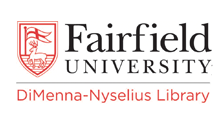Lichens (Rhizocarpon geographicum (L.) DC) as a Biomonitor for Atmospheric Pollution in Amman City, Jordan
Document Type
Article
Publication Date
2008
Abstract
The lichen, Rizocarpon geographicum (L.) DC, grown on walls and roofs along the main streets in Amman city-Jordan, was used as a bioindicator for atmospheric pollution. The samples were collected from three areas representing high traffic, residential, and remote sites. The results of heavy metals concentration (Zn, Cu, Pb, Cd and Co) showed clear variations between the investigated sites comparedto that of the remote site. The highest concentrations occurred at the busy traffic sites and the lowest at the remote site. Peak concentrations of zinc (1206 μg g-1), copper (255 μg g-1), lead (400 μg g-1), cadmium (1.8 μg g-1) and cobalt (4.1 μg g-1) were observed at the city center of Amman that characterized busy road traffic. The heavy metal concentrations of lichens at Amman city were found to be at the upper limit values reported in the literature for temperate countries. Furthermore, lichens were found to be comparable to dust deposits and tree bark in terms of heavy metals content for the metropolitan area.
Publication Title
Environmental Bioindicators
Repository Citation
Jiries, Anwar G.; Batarseh, Mufeed I.; El-Hassen, Tayel; Ziadet, Anf H.; Al-Nasir, Farah; and Berdanier, Bruce W., "Lichens (Rhizocarpon geographicum (L.) DC) as a Biomonitor for Atmospheric Pollution in Amman City, Jordan" (2008). Engineering Faculty Publications. 30.
https://digitalcommons.fairfield.edu/engineering-facultypubs/30
Published Citation
Jiries, Anwar G., Mufeed I. Batarseh, Tayel El-Hassen, Anf H. Ziadat, Farah Al-Nasir, and Bruce W. Berdanier. "Lichens (Rhizocarpon geographicum (L.) DC) as a Biomonitor for Atmospheric Pollution in Amman City, Jordan." Environmental Bioindicators 3, no. 2 (2008): 106-113.
DOI
10.1080/15555270802216073


Comments
Copyright 2008 Routledge/Taylor & Francis.
A link to full text has been provided for authorized subscribers.